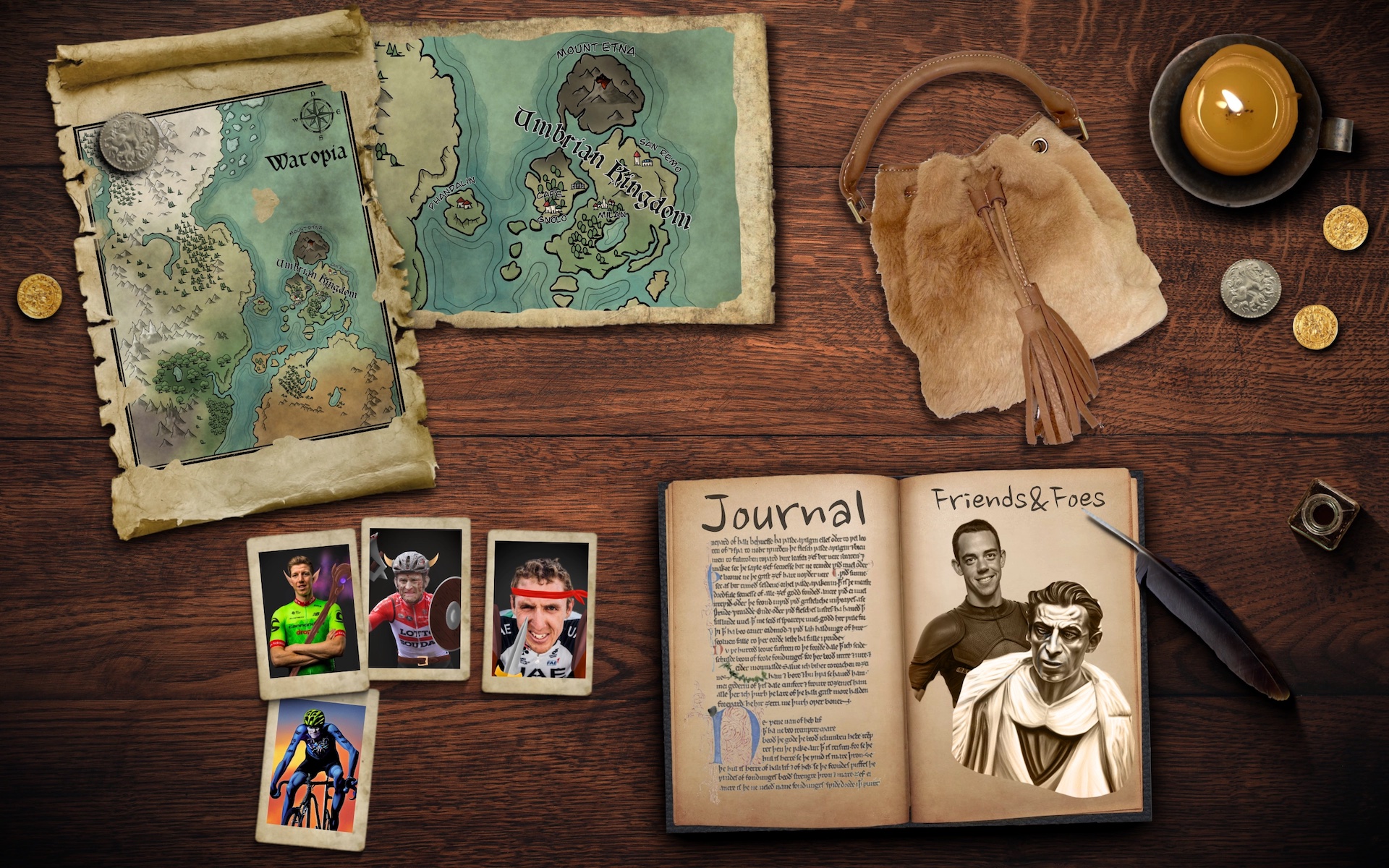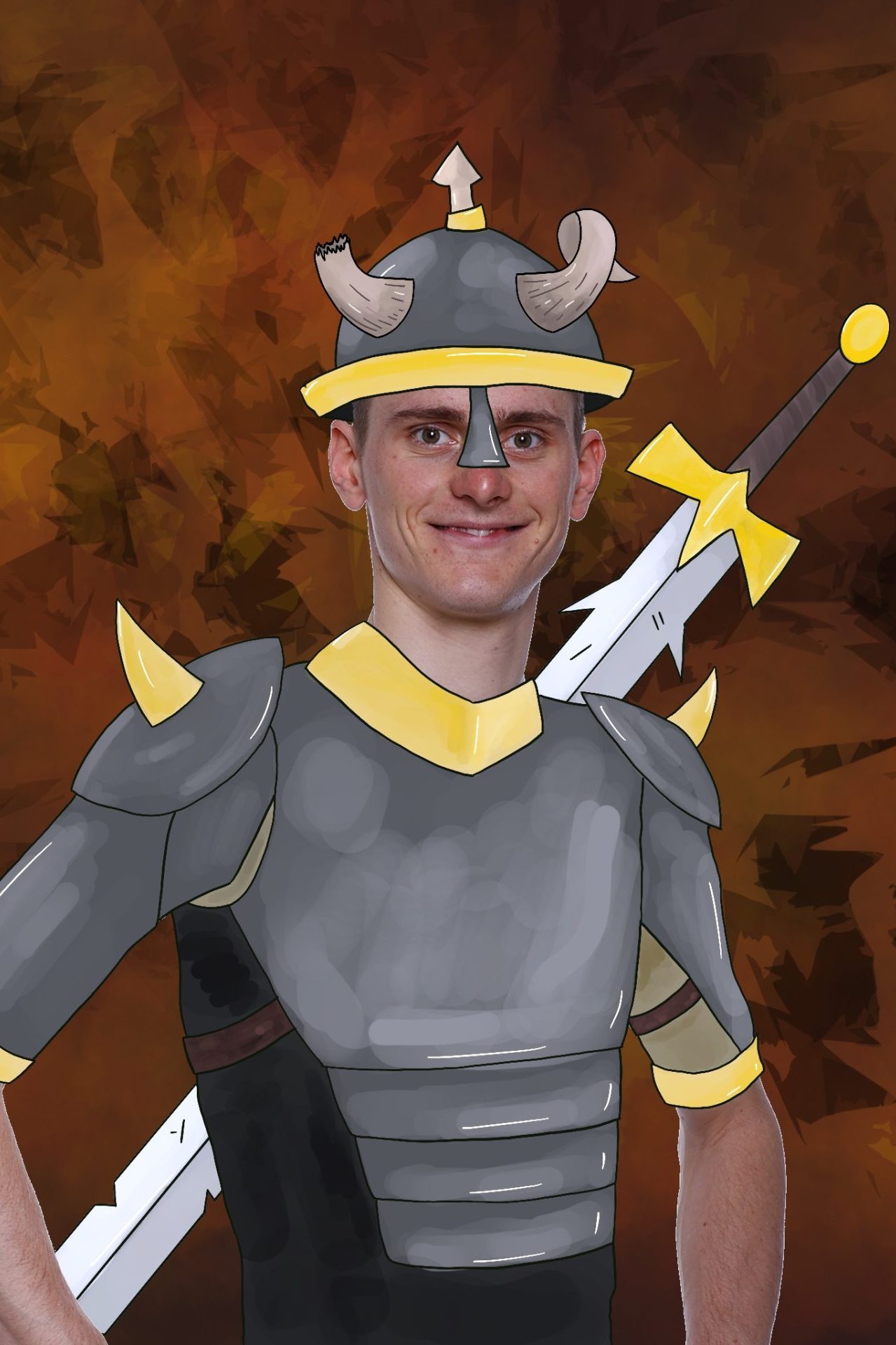Here’s a question you’ve probably never asked yourself: What would happen if you combined the sport of professional cycling with Dungeons & Dragons?
At face value, it doesn’t make much sense. Real-world sport contested by elite athletes paired with a fantasy tabletop roleplaying game played by people from all walks of life? It’s not the most obvious combination. And yet, if you’re creative enough – like Escape Collective member Hoël Wiesner – this unlikely pairing actually sort of … works.
Let me explain.
Professional cycling is a sport built on stories; where memorable characters go on memorable journeys, alone and together, experience ups and downs, learn about themselves and the world, and grow in the process. These stories unfold in locations steeped in history and legend, with each narrative thread weaving together to form one bigger, more vibrant tapestry.
When you look at pro cycling through that lens, it makes the sport surprisingly suitable as inspiration for a Dungeons & Dragons campaign.
Dungeons & Dragons, or just D&D, is the world’s biggest and best-known roleplaying game. First released in 1974, the game has evolved considerably in its almost-half-century of existence, and its owners claim that north of 50 million people have played D&D at some point.
In a typical D&D campaign, a group of players take on the role of adventurers within a fantasy world. They design their own characters, choosing from various fantasy races (elves, dwarves etc.), classes (wizard, cleric, fighter etc.), strengths, weaknesses, and other traits. They explore, interact with other inhabitants of the world, complete quests, find cool treasures, defeat all manner of beasts (and other adventures), and get stronger, wiser, and more powerful along the way.
In D&D, all of the action is overseen by a Dungeon Master (DM), an all-powerful storyteller who guides the players through their adventure (often an adventure they’ve written themselves), and who ensures the game is running as it should.
Which brings us back to Escape member Hoël Wiesner.
Laying the foundations
For his cycling-themed D&D campaign, Wiesner took on the role of DM and some old bike racing teammates were his players.
“About a year and a half ago, a friend of ours in our group chat just was like, ‘Hey, anybody want to play D&D?” Wiesner tells Escape via video call. “This was kind of [during] the COVID bubble of roleplaying. And I jokingly responded ‘Yes, but only if we could play with roving gangs of UCI cyclists fighting for territory and magical items’.
“Cycling is filled with lots of weird, quirky stories and trophies and gear and things like that. And so I thought it was just a passing joke in our group chat but he took me up on it, and a few others were like, ‘Yeah, actually, I’d be down to play Dungeons & Dragons. Which unfortunately meant for me, because I had the most experience, [it] also landed me in the role of Dungeon Master.”

While D&D originated as a tabletop game – and is still played that way by much of the game’s community – the experience is easily portable to the digital realm. And with Wiesner’s group spread across North America – one player in Canada, two in North Carolina, and Wiesner in Maryland – online is how they play.
Like many people do when they first get into D&D, Wiesner’s group started out with the game’s fifth edition Starter Set and played through the introductory adventure: ‘Lost Mine of Phandelver’. But there was nothing ordinary about the characters Wiesner’s group chose to play as.
“My players decided that they wanted [their D&D characters] to be their favourite riders, because that was kind of the grounding of this thing,” Wiesner explains. “So my friend Brandon has always been, since his early career, a big fan of Tiesj Benoot. And so he wanted to be Tiesj Benoot the human fighter.”

“And my friend Kaleb, he was a huge fan of Sep Vanmarcke in his early career when Sep Vanmarcke looked like a potential big Classics name. And so he wanted to be Sep Vanmarcke the wise wizard who always longed after the famed promises that had been foretold at his birth.
“So he became Sep Vanmarcke the elven wizard. Sep Vanmarcke doesn’t like to sleep in a bed; he likes to sleep on a set of cobblestones as a hope that one day he may win the fabled Roubaix pavé.
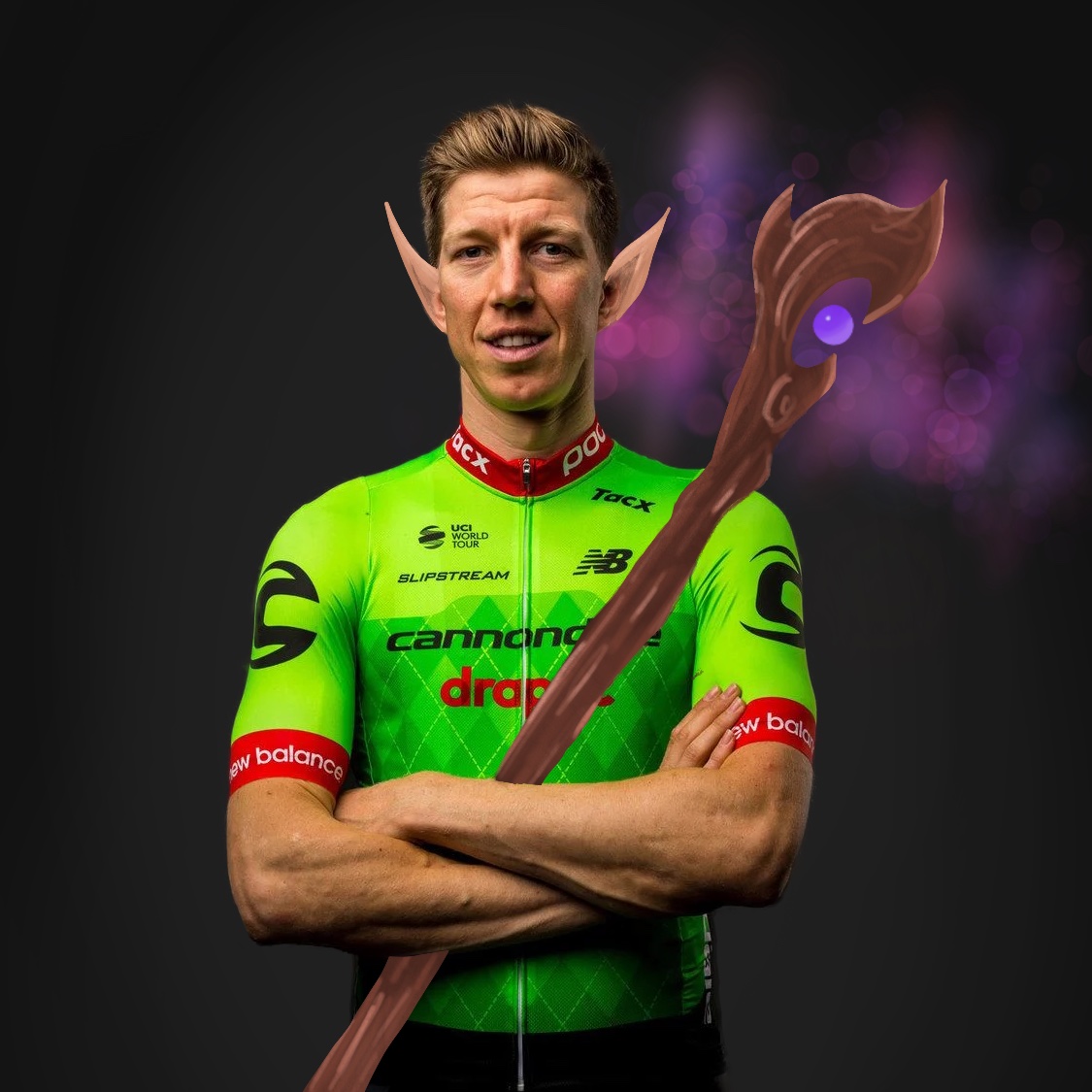
“And my friend, Jeff wanted to be a halfling rogue and has always liked two riders: Simon Geschke and Dan Martin; the panache of the Dan Martin smile and daring attacks. And so he became Dan Martin the halfling rogue who likes to go on stabbing sprees.”

Wiesner and his crew played through and enjoyed their Lost Mine of Phandelver campaign, but the question soon became: what next? How to continue the adventure from there? How to make their D&D experience even more cycling-themed?
Building a new world
Wiesner found the answer to those questions in an unexpected place: in Zwift’s fictional world of Watopia.
“Here I am looking at this fantasy map that is straight, staring me in the face,” Wiesner recalls. “And so I was like, ‘OK, cool. I’m going to redraw Watopia as a fantasy map.’
“I just dropped the the Lost Mine of Phandelver dead centre of the Zwift world and then Phandalin [the town where the Lost Mine of Phandelver adventure effectively begins – ed.] is this random island that I picked in Watopia and that is where you guys are starting this new campaign.”
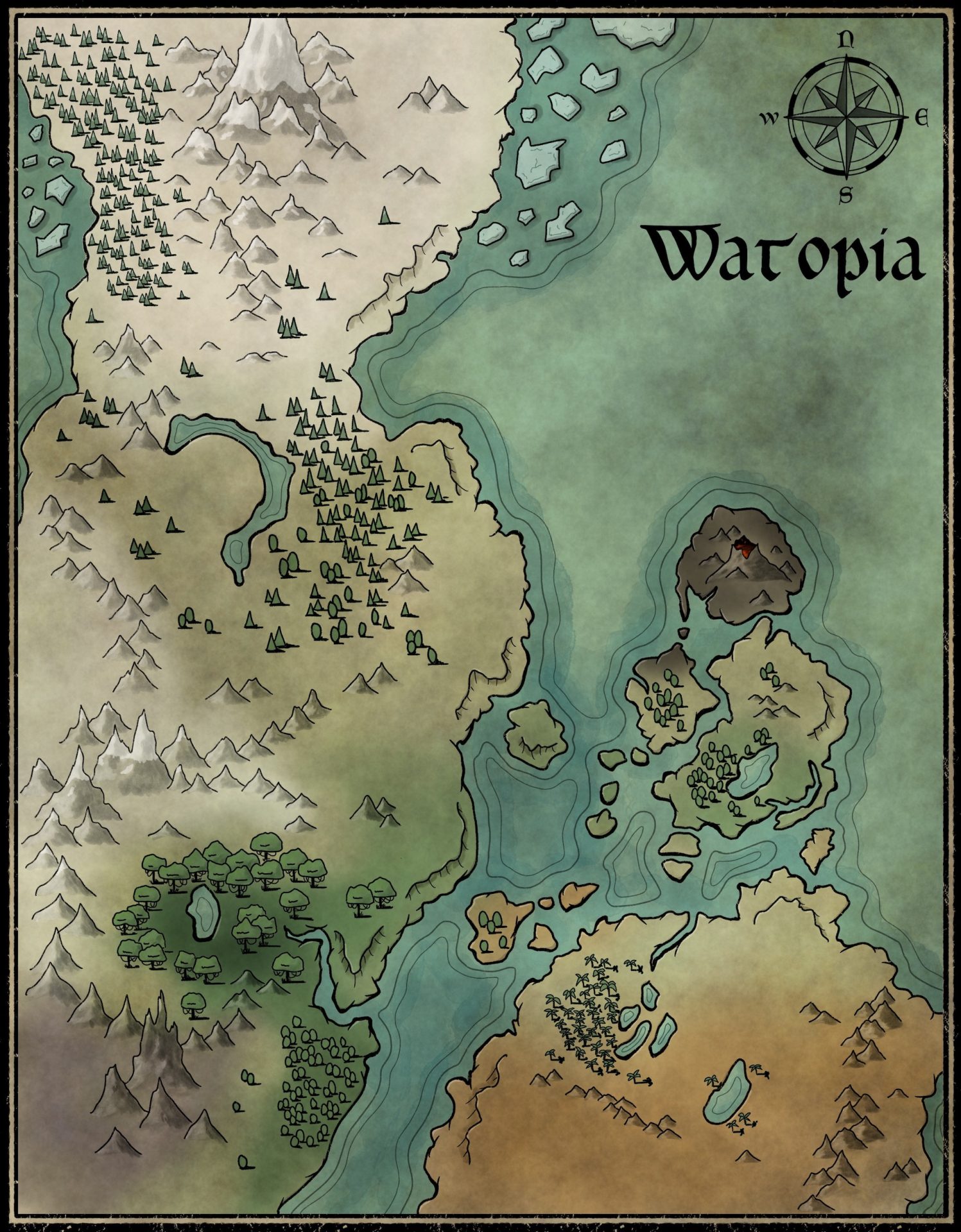
Wiesner started building out his new fantasy world from there, using the terrain of Watopia as a template and placing key story locations around the world. The adventures he’d invite his players on would be loosely inspired by cycling’s WorldTour calendar, starting, naturally, with a Tour Down Under-themed adventure.
“Phandalin actually got dropped in a version of Australia, so they did the Tour Down Under first as like a little preview of the world, and they met Richie Porte,” Wiesner recalls.
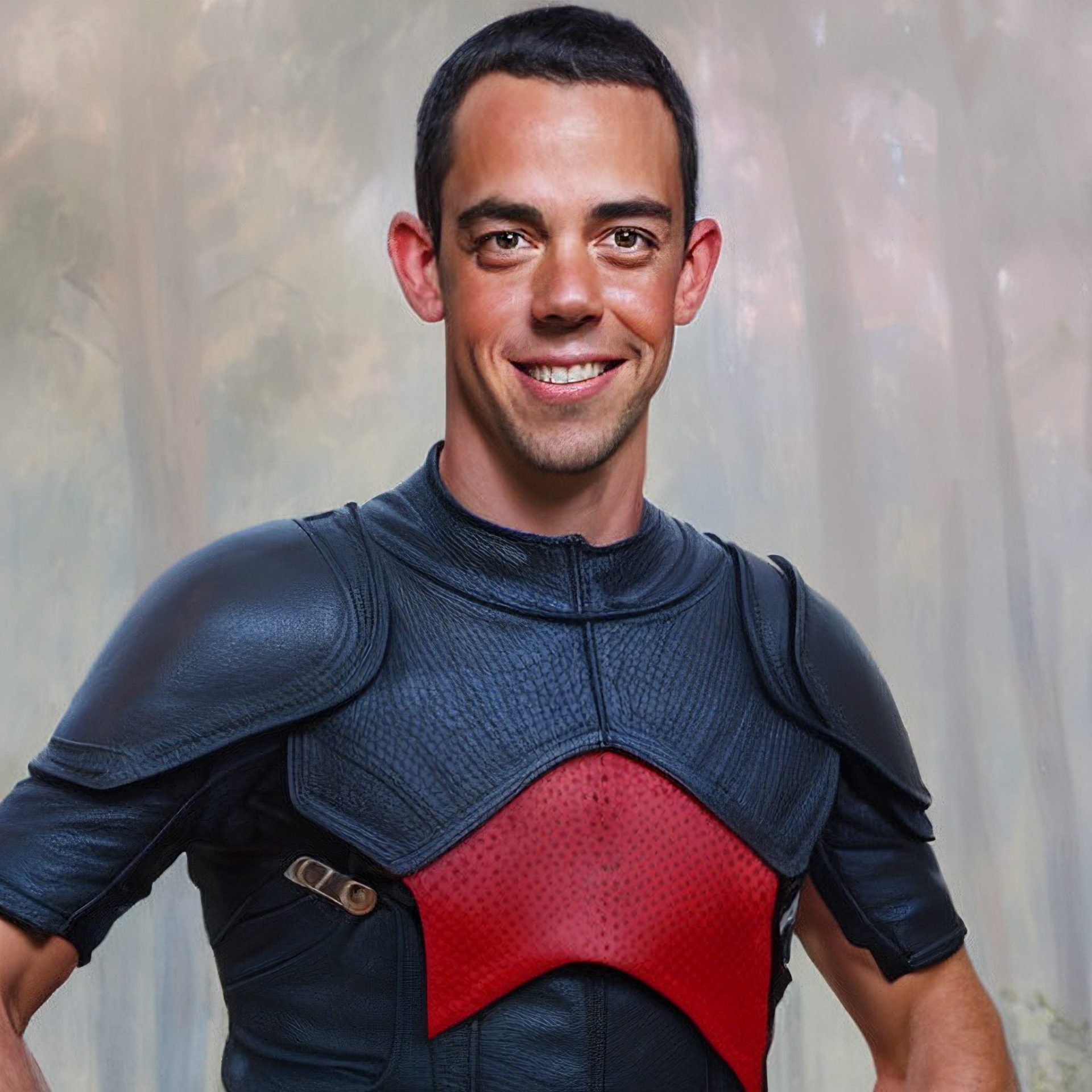
Wiesner, who describes himself as a huge Porte fan, explains that in his fantasy world, Porte is a gnome and former adventurer who needed some help from Wiesner’s party. After all, as a now-former adventurer, Porte isn’t able to fight quite the way he used to.
“There was a monster living at the top of a hill – Willunga Hill – and he sent them [the characters] to clear the area of Willunga Hill so he could go up and start climbing again,” Wiesner explains with a smile.
It was also in Wiesner’s fantasy version of Australia that the group discovered an old team bus abandoned deep in the forest. “It’s now how they get around the world and it grants them a few bonuses on long rests,” Wiesner says.
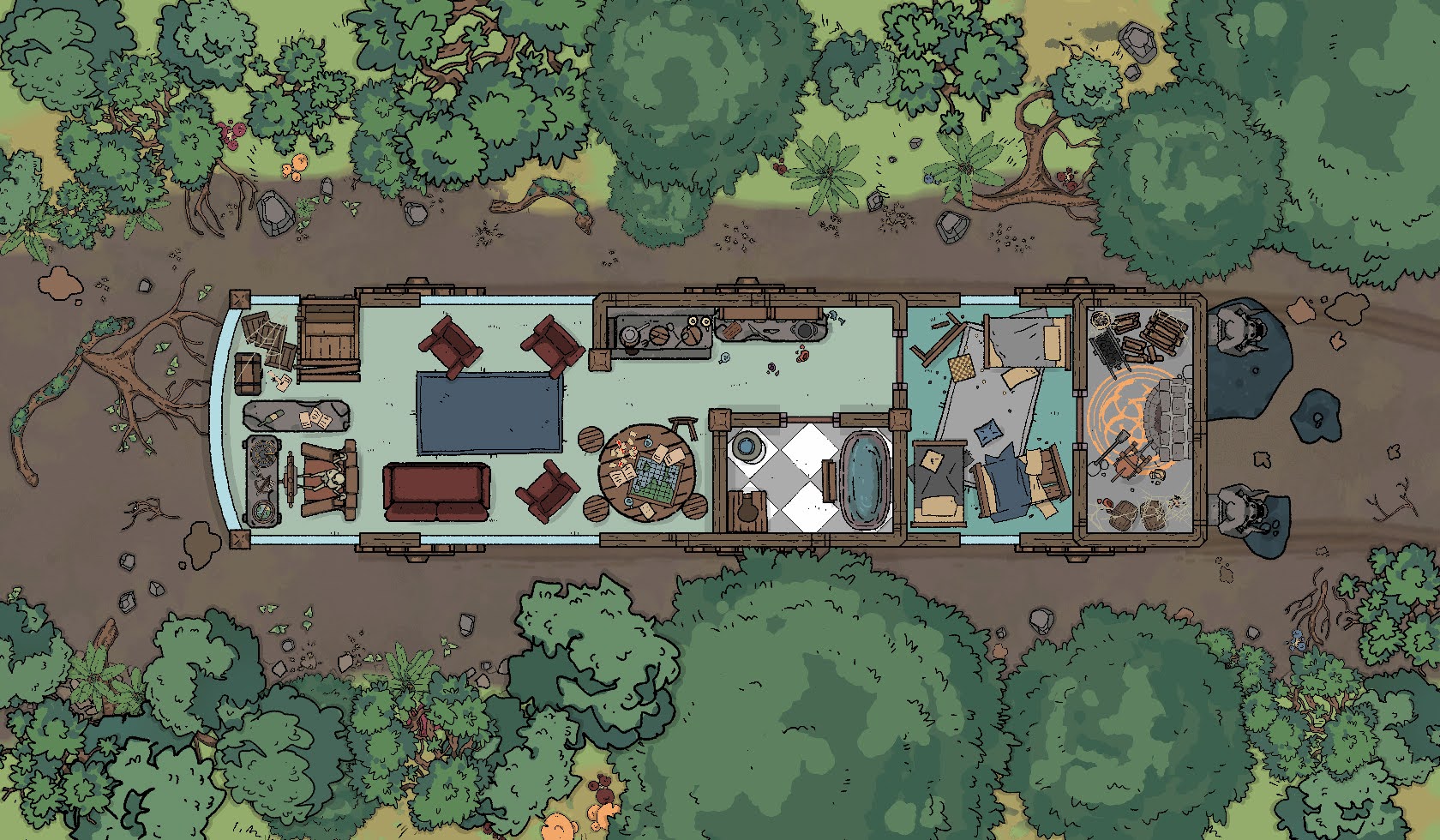
Of heroes and villains
Wiesner’s D&D adventures aren’t just inspired by the pro racing calendar; they’re also influenced by the real-life stories of those in the world of cycling. Which is how former sprint ace turned convicted domestic abuser Mario Cipollini became embroiled in their game.
“As I was trying to figure out what to do next, I think the Mario Cipollini verdict on him being accused of various things came out,” Wiesner says. “I was like, ‘OK, Mario Cipollini is going to be the next bad guy, and he’s going to be the one they go after.’
“They did Tirreno-Adriatico and went hunting for the trident [the Tirreno-Adriatico trophy is a giant, gold trident; the perfect cycling-meets-fantasy crossover – ed.] and then they did Milan-San Remo and did a whole thing there and now they’re hunting down Mario Cipollini down Mt. Etna looking for the pink dragon scales at the centre of the volcano.”

Wiesner describes his in-game Cipollini as “a big beefy dude who will lay a smackdown on a flat sprint”. In chasing Cipollini, Wiesner’s players also came across one of the Italian’s lieutenants: the also-controversial Gianni Moscon.

It was in “Italy” that they also met up with former pro Luca Paolini, whose off-bike troubles inspired a side-quest for Wiesner’s adventurers.
“Luca Paolini a few years ago was caught up in the cocaine,” Wiesner says. “So Luca Paolini had been seduced by a coven of witches – a hag coven is the official D&D term – and they needed to go rescue Luca from this hag coven who had promised him all these great things. And so they went and rescued Luca, who then told them what Cipollini was up to and so now they’re out hunting Cipollini after having raided his villa for the trident.”

A little while after Wiesner spoke with Escape, his players completed their Italian campaign by defeating the pink dragon ‘La Gazzetta’, acquiring the legendary Maglia Rosa armour for their troubles.
(In Wiesner’s words, the Maglia Rosa is “a pink leather pauldron that grants a +2 dexterity bonus to help with climbing, cold resistance for any run-ins with snowbanks, and of course, immunity to any gastro-intestinal troubles”. Brilliant.)

Play your way
One of the many things that attracts people to D&D is the ability to customise the game to their liking. Sure, D&D has rules – the Player’s Handbook and Dungeon Master’s Guide each span more than 300 pages – but ultimately it’s up to the DM how strictly they want to enforce those rules, and whether they want to introduce their own rules. And when you’re combining professional cycling with a fantasy roleplaying game, that flexibility is a godsend.
“We have a rule about panache,” Wiesner says. “If you do a daring attack that is maybe doomed to fail – in a Thibaut Pinot style – you may get advantage for the next roll.”
In D&D, whenever a character tries to use a certain skill – whether it be swinging a sword at an enemy or trying to persuade a merchant to offer better prices – dice-rolling is normally involved. Combine the outcome of the die roll with the character’s skill in the relevant area to see whether the chosen action is successful.
Wiesner offering ‘advantage’ to players that use panache? That gives them the ability to roll a second die when using a skill, and take the higher of the two rolls, thereby increasing their chances of success. It’s a clever and helpful reward for those who choose to play the game with style.

But it’s not like Wiesner is creating this world and its rules on his own – his players are helping too. Like how they’ve helped Wiesner choose what adventures they’d like to do next.
“I had offered to them before we went to the Italian Classics, if they wanted to try to get some money and to release Oleg Tinkov from jail, like a prisoner escape plan,” he says. “And they were like, ‘No, we’ll leave Oleg where he needs to be. We’re good.’
They even convinced Wiesner to introduce bikes into the fantasy world.
“One of my players has been really wanting a bicycle, which makes sense, right?” Wiesner says. “But I didn’t know how to incorporate a bicycle and so I thought that I would punt it down the road. They met the founders of Bianche, and Campagnolo and Colnago who ran a coffee shop, because of course instead of health potions we have espresso shots. It’s pro cycling after all. But they had to get some items for them, which allowed them to forge bicycle frames.”
The players have since paid some dwarves to forge a cassette, chain, and crankset, they found some wheels in an abandoned cavern, and they stole some brightly coloured paint from the coven of witches, completing their bike build.

Leaving Italy behind
Since the group’s Italian adventure, their campaign has continued apace. For starters, they met a group of Norwegian dwarves, led by Alexander Kristoff.



In Wiesner’s words, the group has also uncovered “the first clues of a grand UCI conspiracy by intercepting letters from David Lappartient”.
“The UCI is the big malevolent force lurking around every corner and shaping the fate of Watopia from the shadows,” Wieser says. “I’m still trying to work out how to incorporate them properly into the story, but (spoilers) my current draft idea is for it to be led by a powerful beholder.”
In the D&D universe, a beholder is an orb-like monster with one large central eye, and lots of smaller eyestalks on top.
“UCI … UC-eye,” Wiesner says. “Groan-inducing pun, I know, but I find D&D works well with campy humor.”
As for Lappartient, he’s “just a lieutenant, the face of the operation.”
“They’ll have to follow the money to find out who’s really pulling the strings,” Wiesner says. “Maybe the final boss will be a sportswashing dictator, or the CEO of a magical/medical doping conglomerate. I haven’t decided yet. Maybe it’ll be UCI Overlord?! It’s highly probable Escape Collective reporting might influence the final story.”

As Wiesner and his players are learning, the scope for cycling-inspired adventures is endless. For example, Wiesner says the party is headed for “a Spanish campaign with the shadow of a Jumbo Trident looming”. And he believes that the D&D-meets-cycling campaign will likely end with two of the world’s biggest races.
“I have all sorts of ideas for the Tour de France,” he says. “At the end of the day, kind of like in professional cycling, I think the Tour is going to be the wrap up of the campaign – getting that yellow jersey is the peak. And I have a huge bias towards Roubaix so Roubaix will probably be like a final thing when they get to higher and higher levels.”
The party started off at level 1 as they tackled the Lost Mine of Phandelver. After conquering Mt. Etna and finding the Maglia Rosa, they’re now level 9.
“We’ve joked that as they level, they’re getting promoted through the UCI divisions,” Wiesner says. “1-5 they’re crushing local crits; 5-8, they’re on a Continental team tackling .2 races. Now they’re up to the Pro Conti level and getting invites to big-time adventures. The plan is to go all the way to the end: level 20. That’s what it takes to win something like the Tour de France.”
In the meantime, there’s a pesky band of Slovenians that the adventurers seem destined to run into …


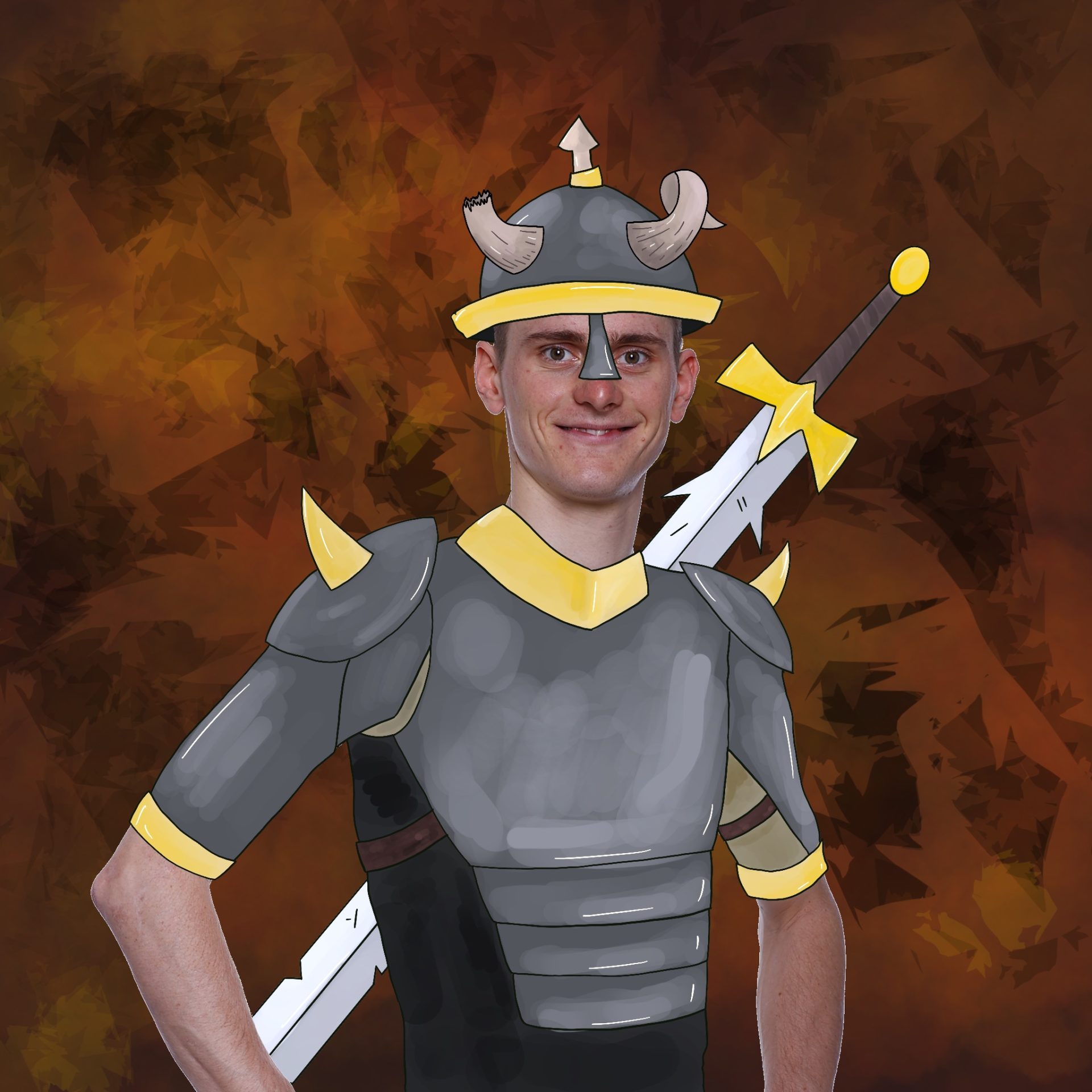
“They’ve had a run-in with them but it’s setting up for a future thing – the gang of Slovenians, Pogačar, Roglič and Mohorič. And so I had fun figuring out ‘OK, what kind of class would Pogačar be? Roglič I knew – everybody talks about how Roglič just [flies] up a mountain. He will activate the afterburners and just teleport. So it had to be a class that could have that teleport ability.
“Or I thought of like Pogačar, he stole the Tour de France from Roglič on the last stage [in 2020], and he’s kind of a swashbuckler, so he has to be a swashbuckling thief. And so it’s been fun to imagine what these riders would be like in the fantasy world.
“I think that’s been the highlight for me. Cycling is just such a wild sport filled with stories and crazy drama and exciting plotlines. I like to think of the Tour de France kind of like a soap opera, and then pulling that into the world of Dungeons & Dragons has been a blast for all of us.”
What did you think of this story?
